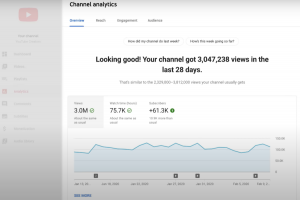You’ve got no profile and the media don’t know you exist. You’ve got a strong story to tell and it’s downright frustrating when you see your competitors in the media spotlight. Small business PR sounds great but if you don’t know how to get started then it could all just turn into a huge headache.

Maybe you’ve tried to get media attention but you’re not getting any traction and it feels like a drag. You’re good at what you do and it’s annoying that you haven’t got the media visibility to give credibility to that. You know you deserve it.
It’s a drag – you’ve bought the books, tried the courses, read blogs and articles but it still hasn’t clicked. And, it feels more important than ever to be seen, and to stand out, in a crowded market place, don’t you think? So, what is holding you back?
Your head is in the wrong place
You’ve heard the mantra time and again – focus on the needs of the customer. The same goes for media contacts. You need to think of them as customers, to get inside their heads rather than staying in your own. If you don’t understand what they want then how can you begin to present yourself and your business in a way that will appeal to them?
You need to turn your thinking on its head and inside out. Stop trying to shove stuff at them that isn’t relevant, interesting or newsworthy. Think about it, what do you do with those messages that come into your email inbox from people you don’t know trying to sell you stuff you don’t need and you’re not remotely interested in? Exactly, I’ve made my point.
If you’ve approached journalists with an idea for an article or with a news story and you’ve not got results then it could for any number of reasons:
- what you’ve sent isn’t relevant
- there’s a lack of human interest
- your timing is off
- for a news story – there’s no news value
- it’s not tailored to the audience
- it’s been done before, maybe recently
- for article ideas – you’re not bringing anything new to the table in terms of information, advice or opinion
There’s a common denominator that links all of these together. If you’re not getting the results from approaching the media then it’s because you haven’t done your research, you haven’t got inside the head of the editor, producer, reporter or journalist.
Focus on fewer journalists and get more insight
There’s a huge tendency to want to get yourself in front of as many media contacts as possible and play a numbers game. In fact, you will get much better results if you focus on fewer media contacts but do the research needed to get a thorough understanding of what they want. Now, of course, if you’re sending out a press release then you can’t delve deep to get to know every single journalist in your list. That’s just not practical.
From a news story perspective what’s important is understanding the ingredients of a news story that journalists are looking for and making sure the right journalists get your story – that requires research. And, if you are seeking to secure an opportunity to contribute an article to a publication or website then doing research is the only way to make your efforts count. Of course, you don’t have to do the research yourself but the research does need to be done none the less.
One target at a time
So, where do you start with your research and how can you use it to kickstart your small business PR? I’ve set out a 7 step process below using the aim of securing a contributed article on a website, or in a publication, as a working example. So, here are the steps.
1. Identify the website or publication you are interested in targeting. You could pick more but let’s keep it simple and manageable. You don’t want to feel overwhelmed before you start. The aim is to follow through on the steps so that you get results.
2. Read the publication or content on the website to get a good feel for its tone, structure and style. Check whether the articles are contributed or written by staff. You’ll see easily whether they are contributed because of the by line – the copy at the start or end of the piece that gives a line on the author and usually a bit of information about their business and a link to their website. And, for websites if they accept contributed articles then it’s highly likely there will be a section on the website providing contributor guidelines. These will set out how to submit an idea or a finished article and the requirements in terms of style, length and format to stick to.
Have a look too to see if there is a media pack on the website. Media outlets use media packs to outline their reach and the profile of their audience to help advertisers decide on whether that’s a good fit for them. The detail in the press pack is useful background information for you too so it’s worth a read. From that research you should be able to identify the key person to narrow in on such as the editor or specialist reporter.
If you have no idea where to start with this first step and are struggling to find a relevant media outlet then you can use a search engine. Simply type in a word to reflect your niche and add ‘+ news’ and see what pops up. You can also ask your clients or those in relevant forums and special interest groups. There are many other ways to pin down the press and media that are relevant to your business – you can find more resources in this article: 15 killer resources for finding and engaging journalists.
3. From your research, pick out the most popular themes – the topics that come up time and again, the ones that get shared most, the ones that get most comments and views. You’ve now narrowed in on what the readers of that publication/website are most interested in. Read those most popular articles in detail and note down any similarities in tone and style.
4. Check out where the editor/key journalist promotes the content of the publication/website. You’ll usually see social media icons that will give you a good indicator. If you check out each social network then you’ll soon spot which they favour and where they mostly hang out on line – make a note of that. You now need to follow the editor/journalist on those social networks and monitor what they are posting.
5. The next step is to share their content and comment on their articles. This needs to be more than just ‘great article’. This is an opportunity for you to share your insight, showcase your expertise and get on the radar of the editorial team. You’re not trying to push anything, this isn’t about posting comments and referencing your website every other word. The aim is to get on their radar, to build a relationship, to be helpful, to build trust and credibility.
6. Come up with an idea for an article that will appeal to the readership, based on your research. By now you should have a pretty good idea about what readers will be interested in and the slant you can take. Sometimes the idea will be obvious. But, if you are struggling a bit then for a website look through the comments under the article – these can often provide inspiration. Likewise, for publications, readers letters can be handy in this respect. And, look at the articles already published and see if there are ideas or points referenced that can be expanded on in another article.
7. Send an email to pitch your idea that demonstrates you know the website/publication and value the content they share. Keep it short and to the point and outline your idea and why it’s relevant.
Below is a worked example for pitching an idea for a contributed article to a made up website.
…………….
Dear Mick
I wanted to drop you a line to say that I really enjoy the content you share on everybizzsuccess.co.uk I thought the recent article ‘Guest blogging mistakes and how to avoid them’ gave some very handy tips, the one about failing to promote really struck a note.
I wonder, would an article ’21 ways to promote your guest blog to drive traffic’ be of interest? It would emphasise the need to spend as much, if not more, time on promoting a guest blog to get attention and drive traffic. It would also set out ways to promote a guest blog that readers could implement quickly, easy and for free.
I run my own business helping entrepreneurs and small business owners get more media and online visibility through PR and guest blogging.
……………..
I would then add in a line giving a link to my blog so they could see my writing style, plus links to a few relevant articles I’ve already had published to demonstrate credibility. But, if you haven’t had anything published before then don’t worry – just give them a flavour that you can write the article. And, you then sign off in a polite straight forward fashion and hit ‘send’.
When you hear back with the positive news that they want your article then do a happy dance and get on and knuckle down to produce some great content to be proud of. If you haven’t heard back in a week then drop them a line via the social media they favour, and where you’ve already engaged them, to check they got your email. That’s usually enough of a nudge to get a decision.
In a nutshell: Small business PR relies on getting your hands dirty with research to make your efforts count
What have you learned from trying to get small business PR – what has worked for you and what hasn’t?
For more small business PR tips, resources and templates then enter your email address in the box below and access 7 Quick and Easy Ways to Get Media Visibility.
Image credit: Debbie Leven
(295)






